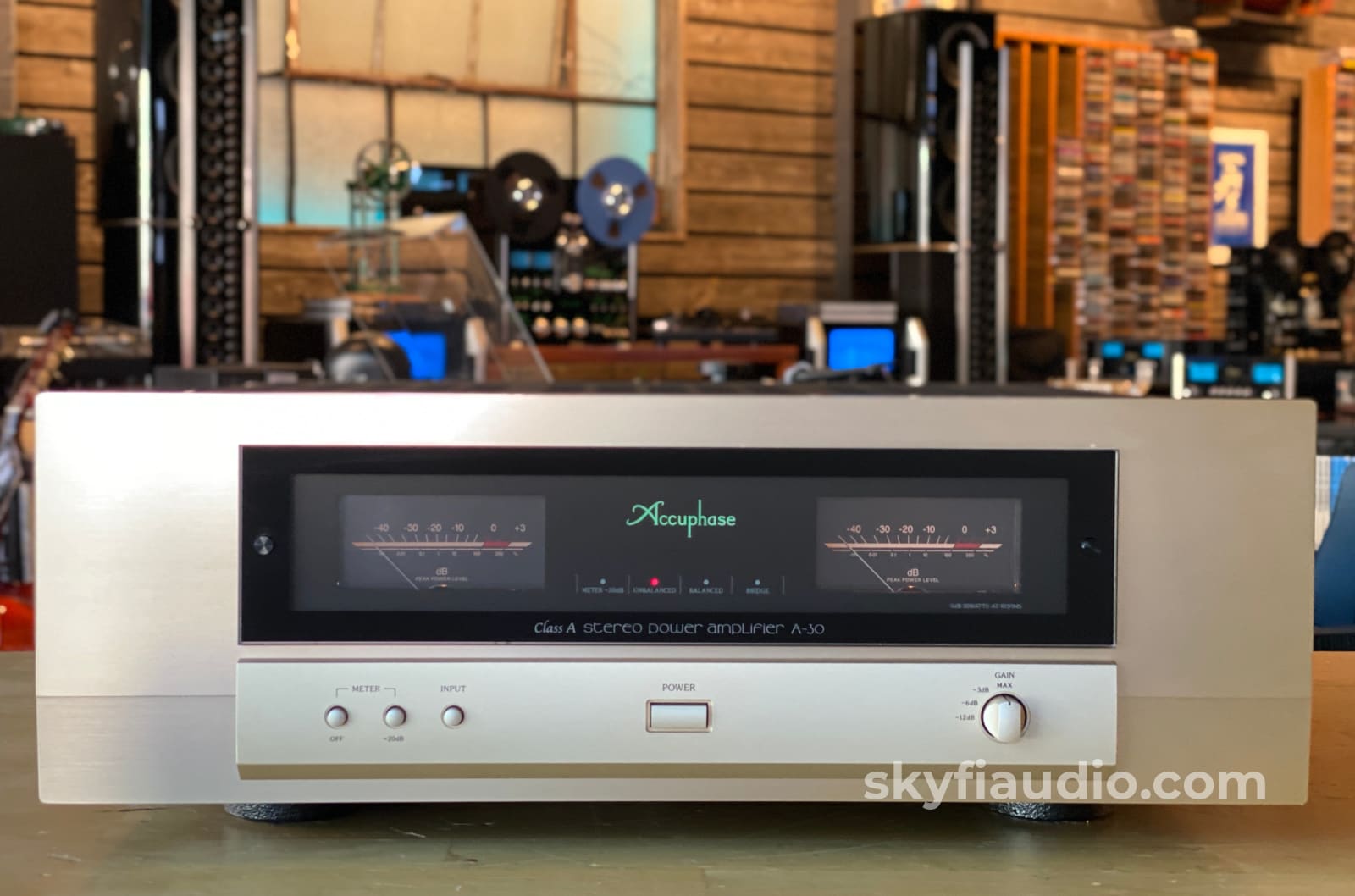
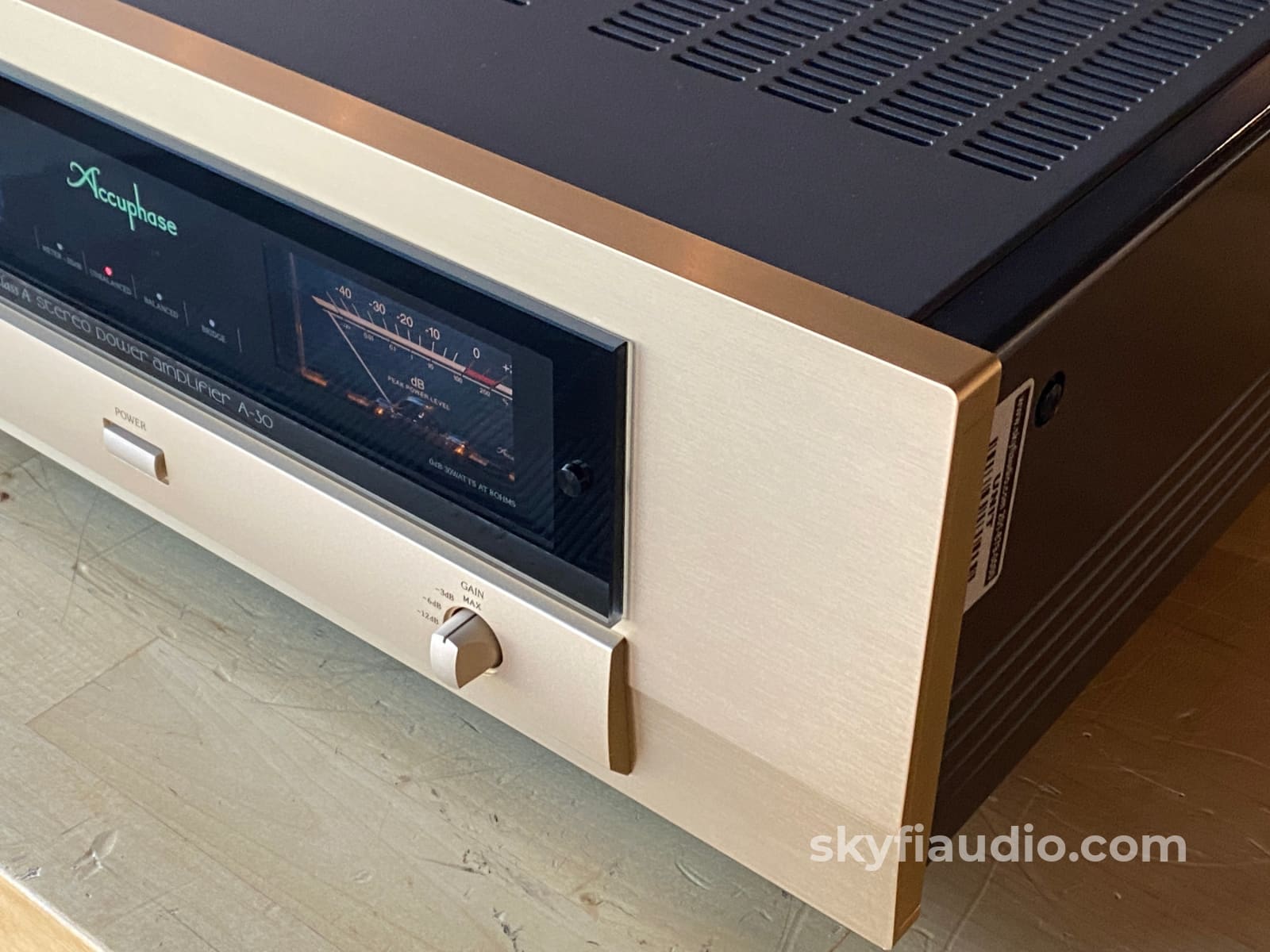
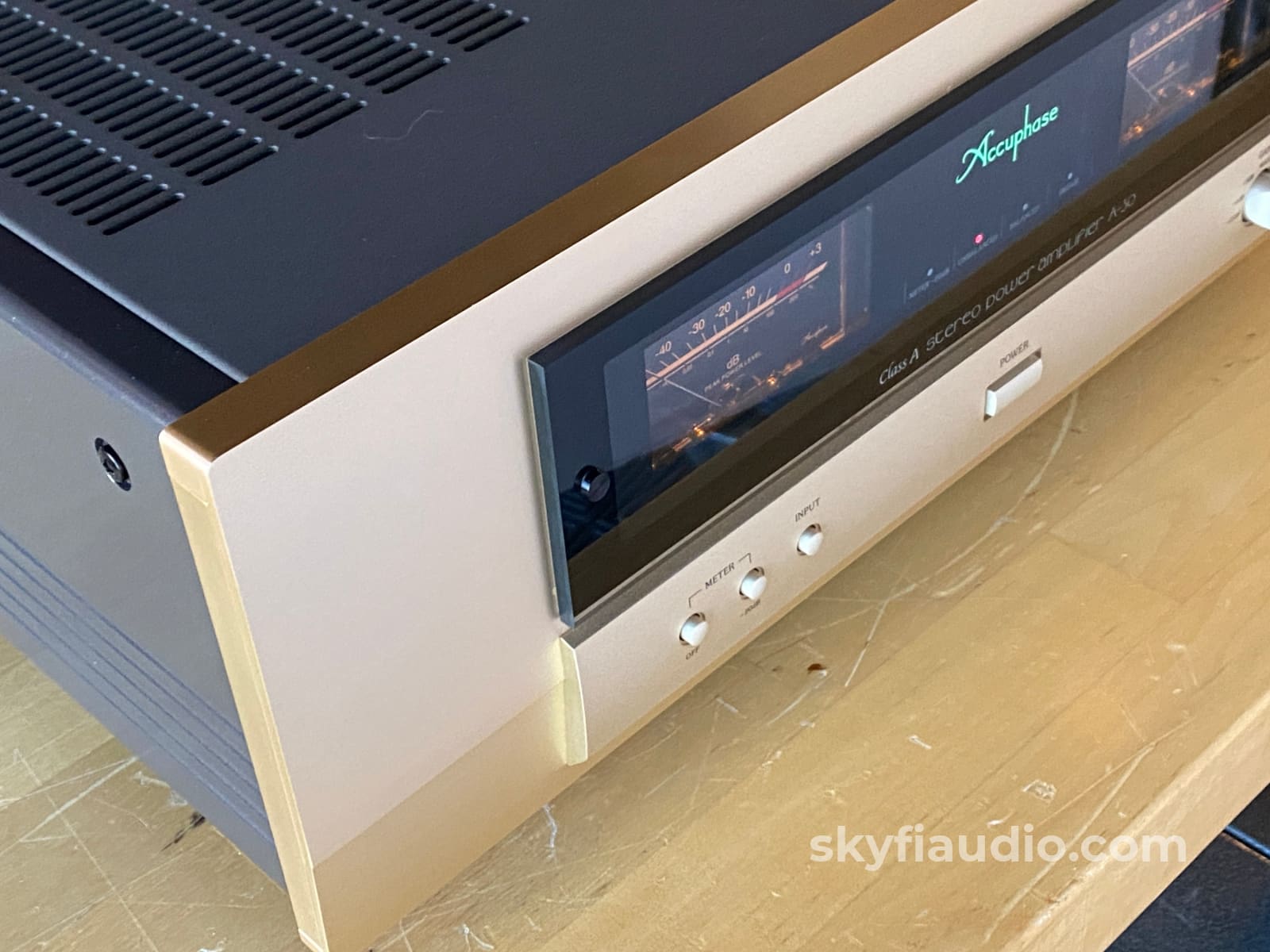
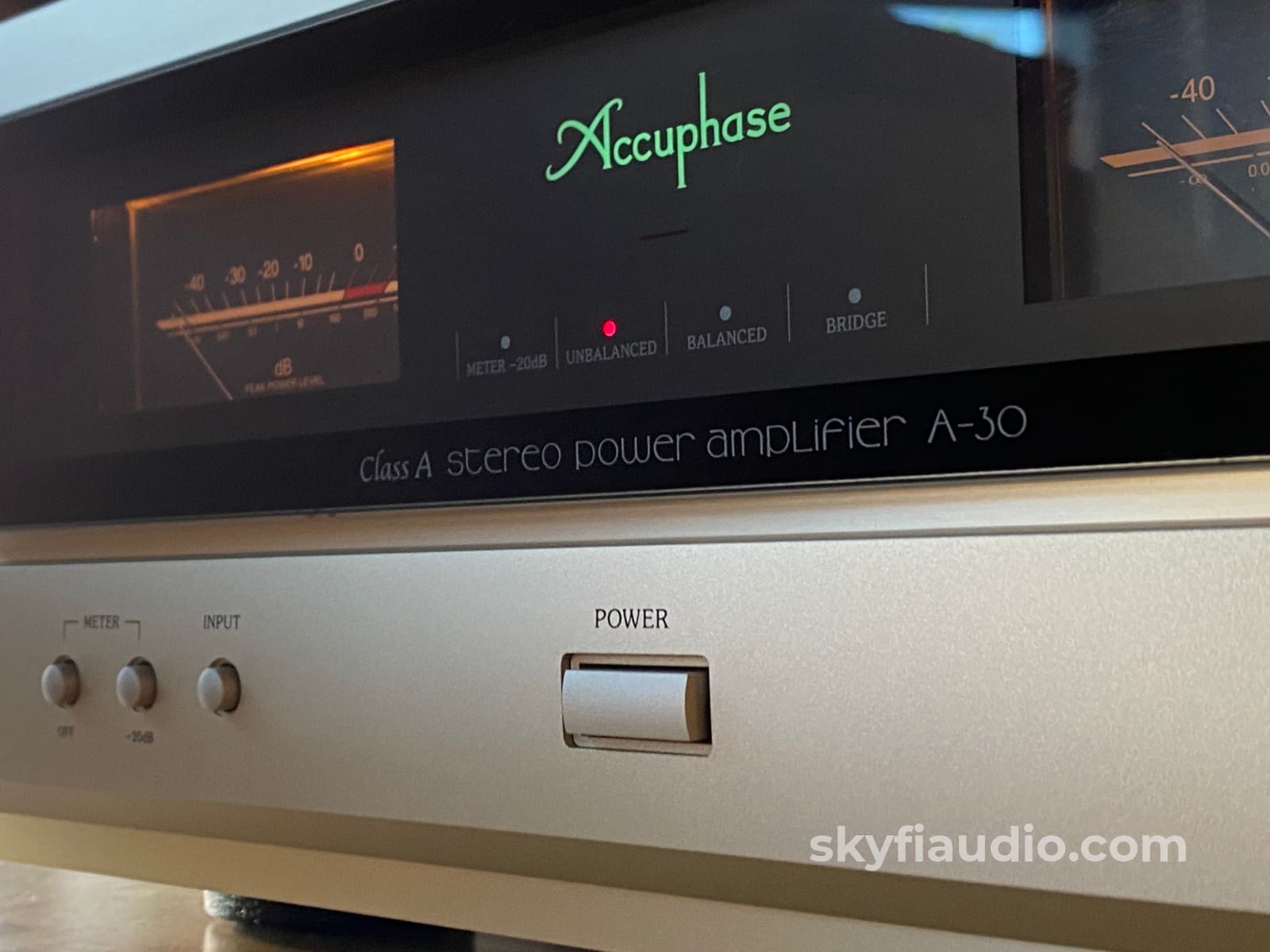
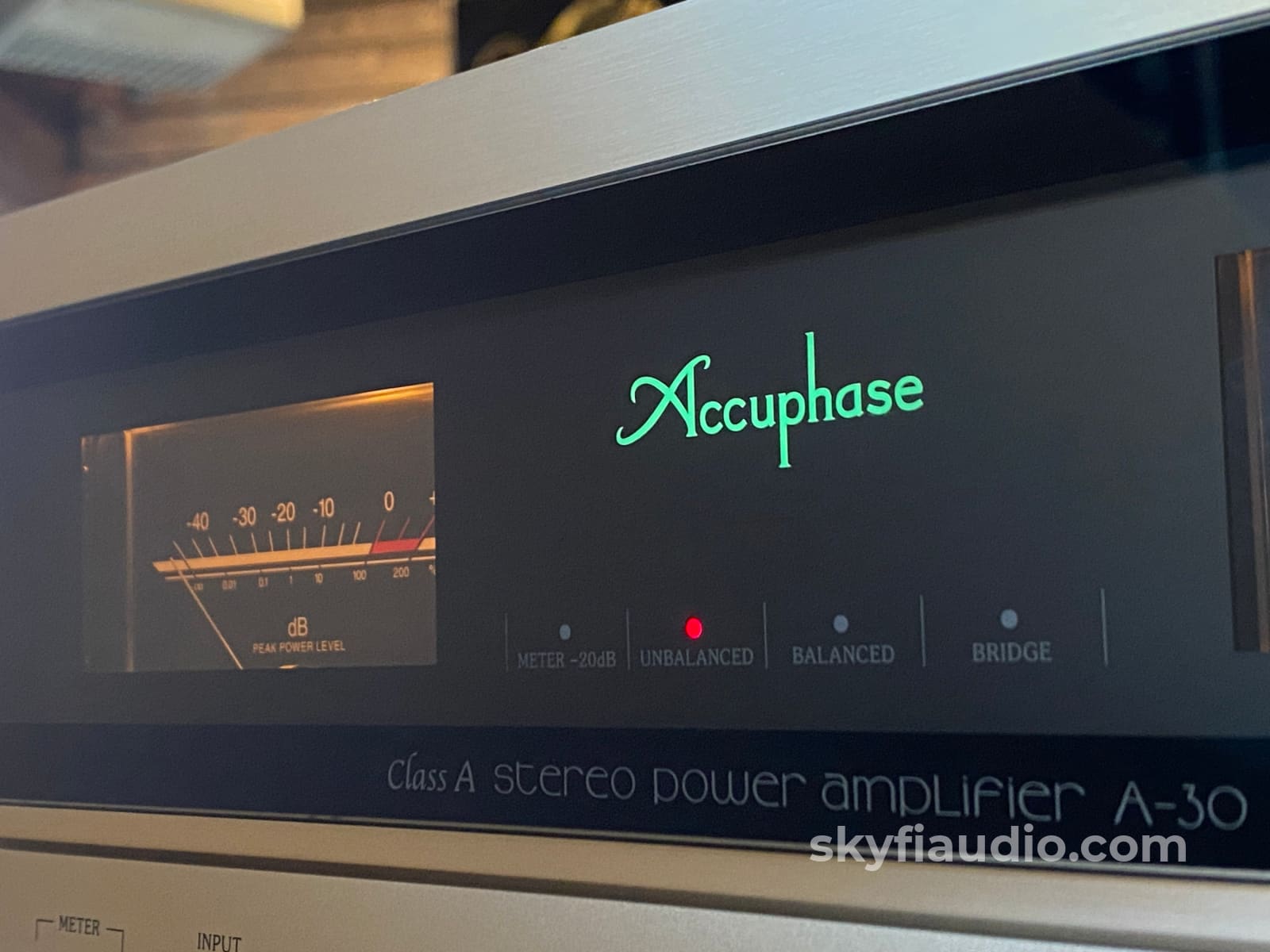

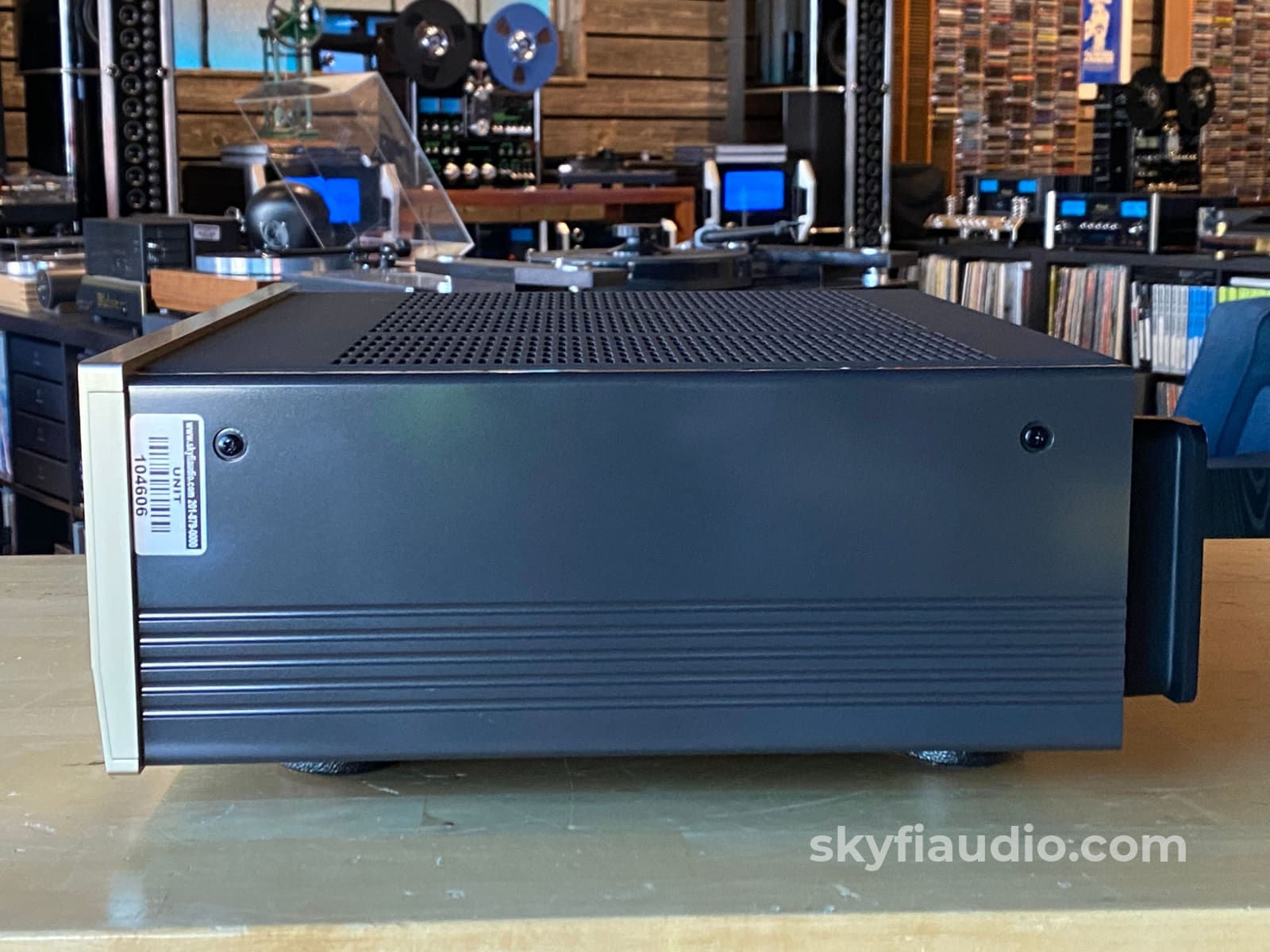
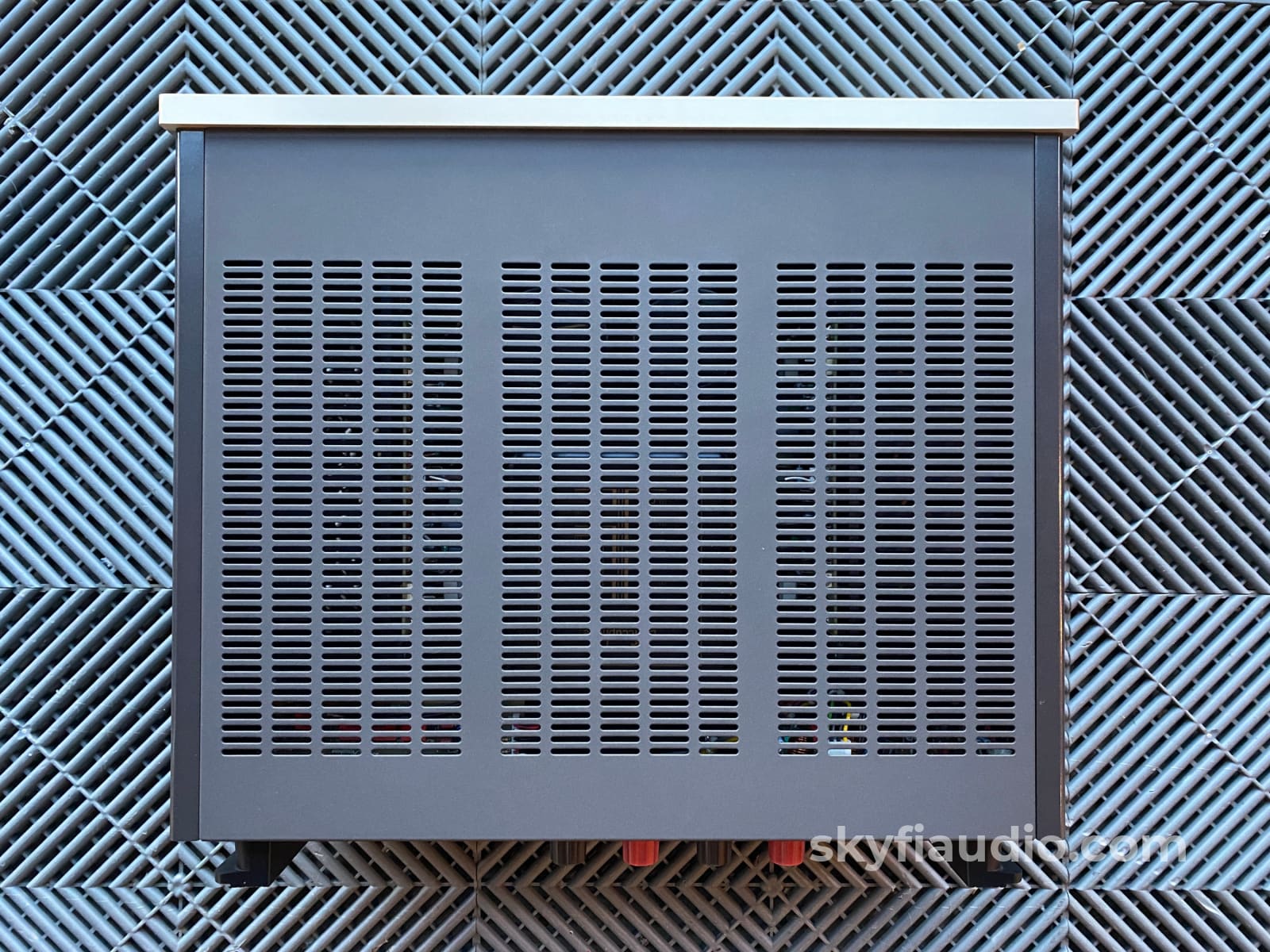
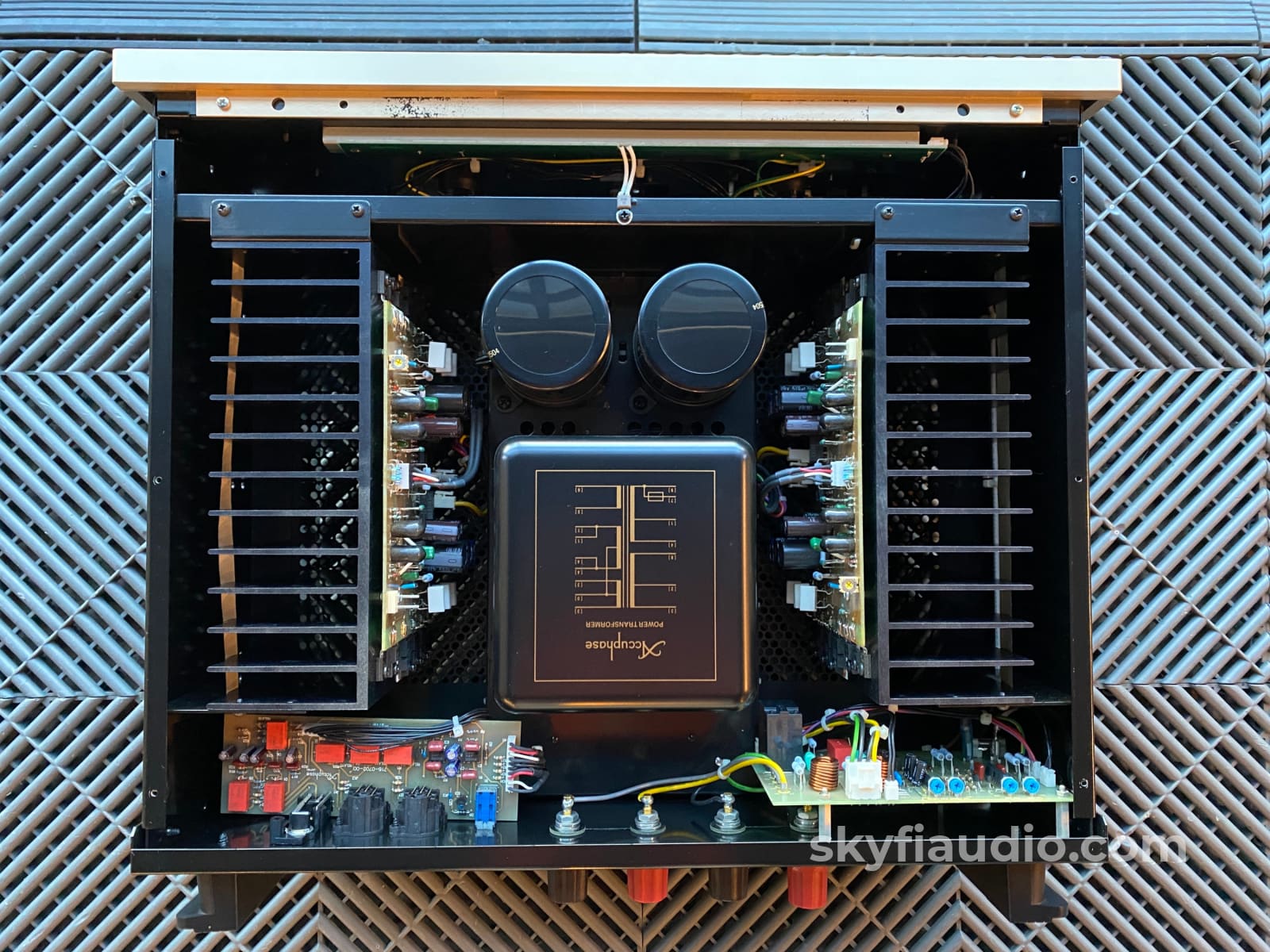

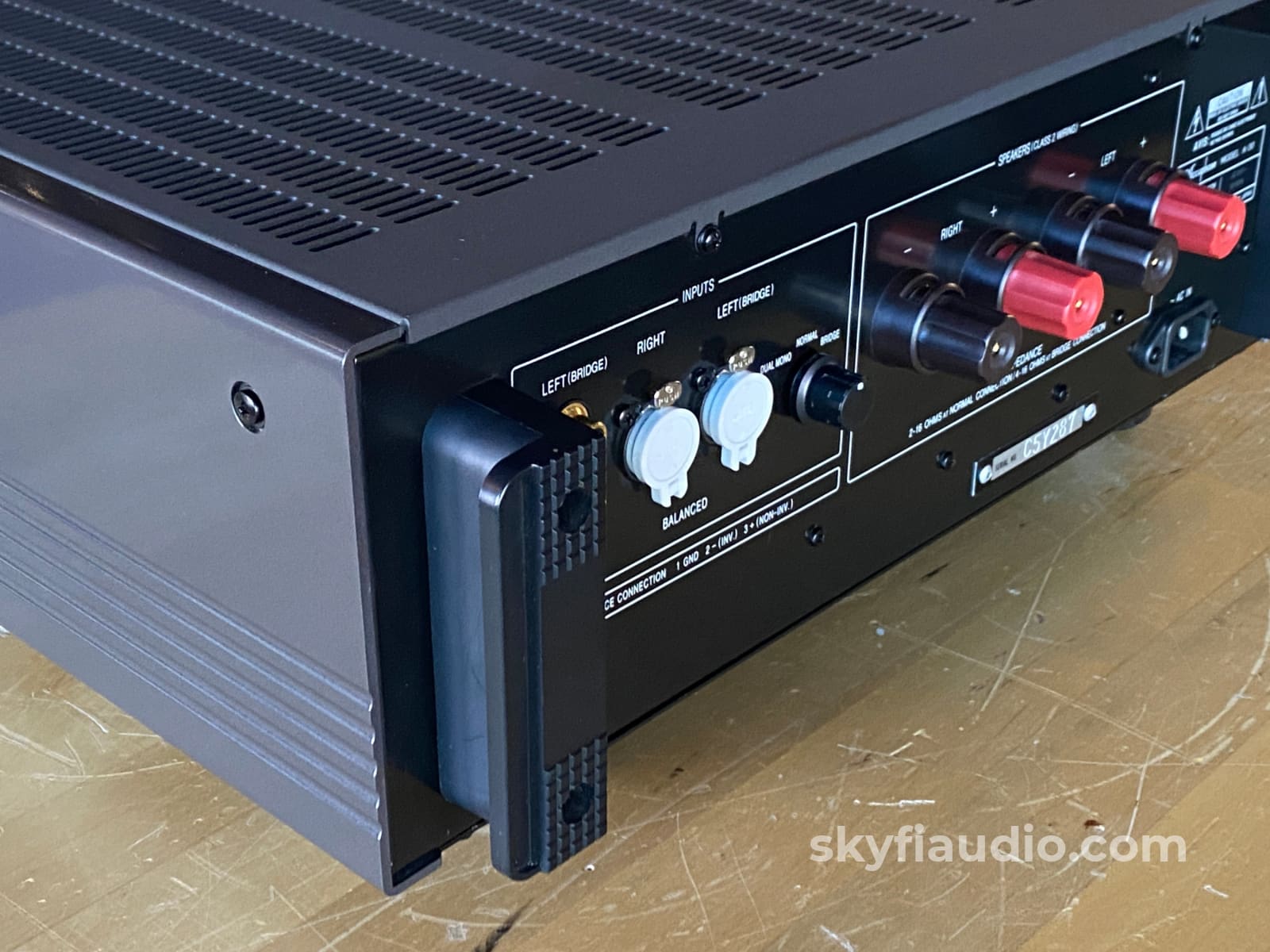
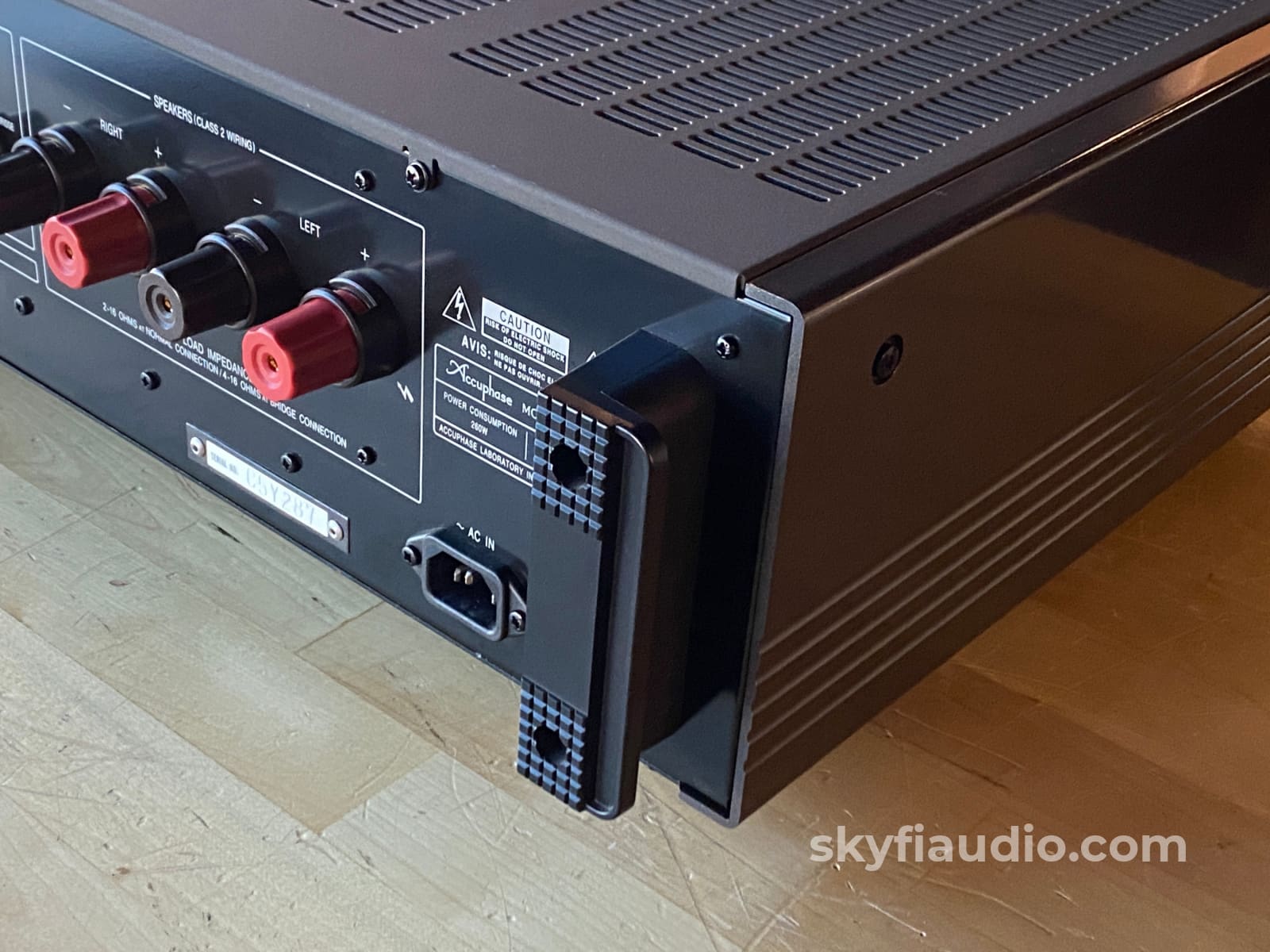
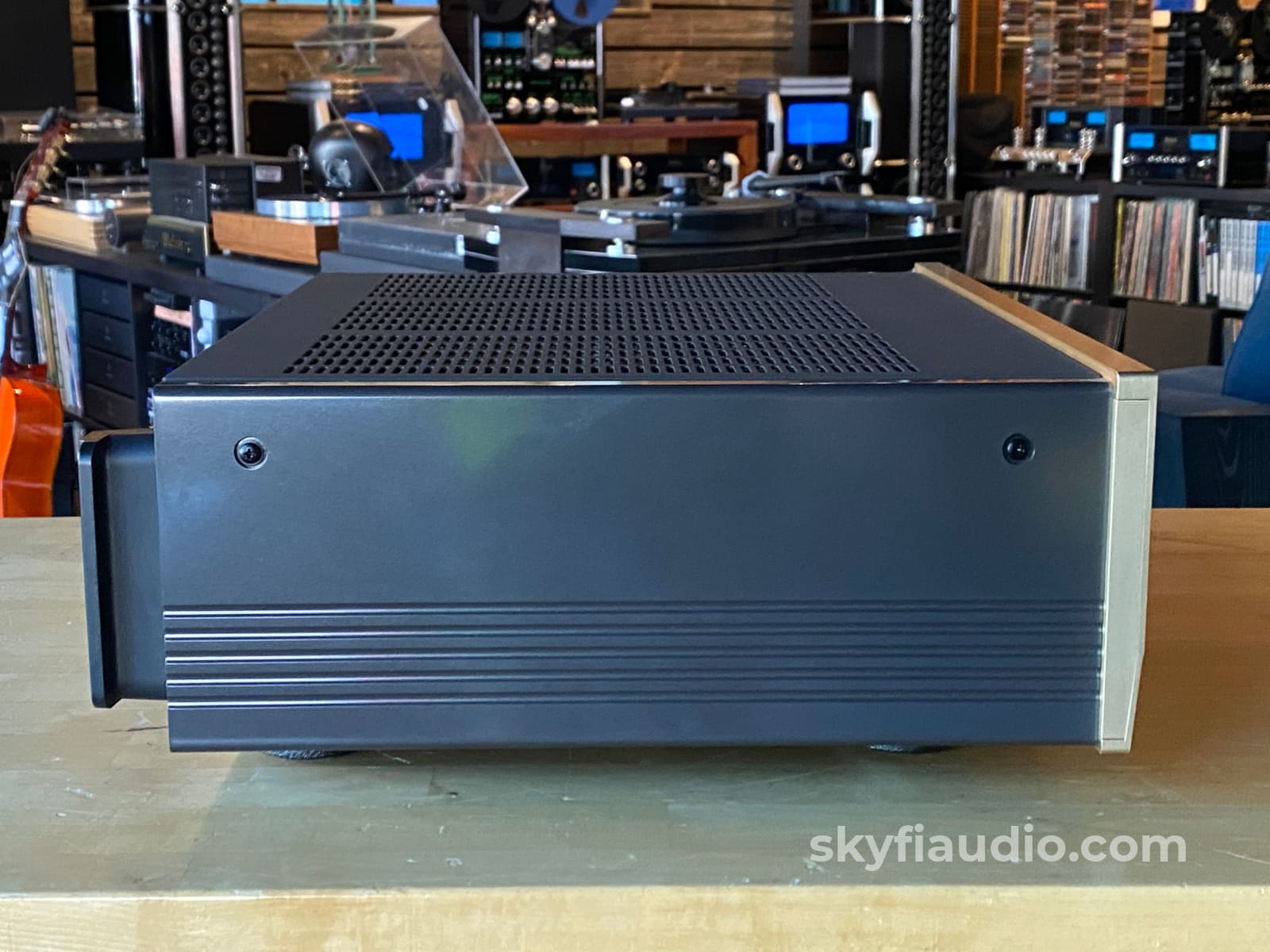
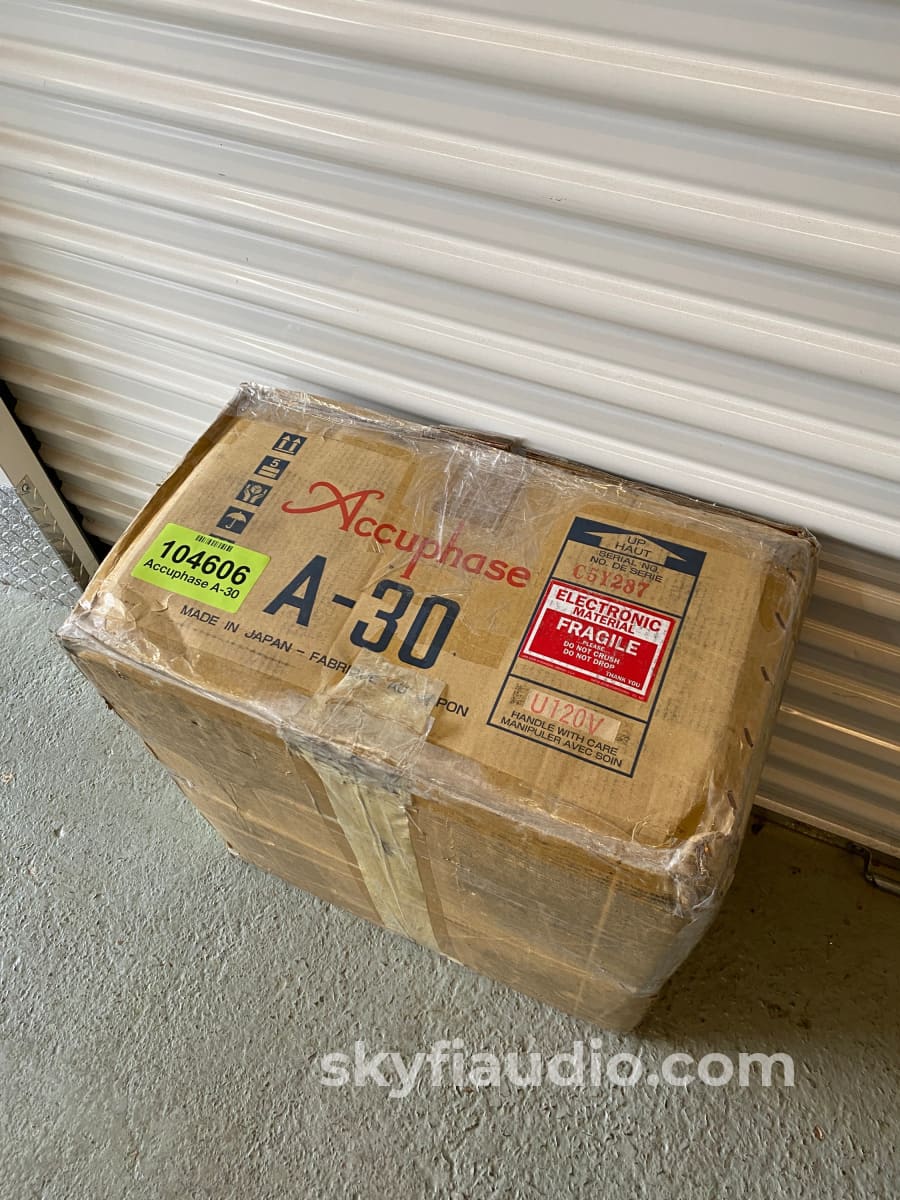
Accuphase A-30 Solid State CLASS-A Amplifier
Free Shipping on Most Electronics - Excludes Speakers and Items Requiring Freight - Contiguous U.S. Only
Pickup currently unavailable at SkyFi 479

Accuphase A-30 Solid State CLASS-A Amplifier
SkyFi 479
479 South Broad Street
Glen Rock NJ 07452
United States
General:
Class A amplifiers continue to deliver the best detail and dynamics of any design.
While lower in power than comparable Class AB amps, they pack quite a punch and are perfect for high efficiency speakers like Klipsch or Wilson.
This 30W Japanese made amplifier is finished to the highest quality level and is filled with the highest quality parts available.
The meters add a nice touch and are super clean and responsive.
Both RCA and XLR inputs provide great connectivity options.
SkyFi Cosmetic Notes:
• Light blemishes to top portion of faceplate,
• Minor deformation of rear panel near right channel handle.
• Super clean faceplate, meters, and knobs.
Brand Background:
The name ACCUPHASE was adapted by taking the prefix ACCU from the word "accurate", and combining it with PHASE which is a most important factor in audio technology. We feel it is a very fitting brand name to describe our products that fully portray this and other important characteristics, which penetrate the innermost depth of audio technology. Our endless pursuit of quality requires a very high degree of processing which persuades us to avoid the use of mass production systems. Consequently, production volume is limited and Accuphase products are available only at a restricted number of specialized stores.
Accuphase equipment is not subject to the whims of market fashion since they are made, above all, to achieve true high fidelity sound reproduction. This is the foremost reason why our products have enjoyed long-run production.
Ownership:
Single Owner
Connections:
RCA and XLR Inputs, Banana and Spade Speaker Posts, Removable Power Cord.
General Sound:
Smooth, uncolored, undistorted natural and clean
Cosmetic Condition:
7/10 = Good. One or two minor scratches. Well Maintained.. See our detailed rating description here.
Working Condition:
Working perfectly and tested in our lab and listening room.
Included:
Just the unit and power cord.
Packing:
Original Manufacturers Packing
Specs:
• Pure Class A operation delivers quality power: 30 watts × 2 into 8 ohms
• Power MOS-FET output stage features triple parallel push-pull configuration Instrumentation amplifier principle
• Further improved MCS+ circuit topology
• Current feedback combines operation stability with outstanding sound
• Bridged mode allows upgrading to true monophonic amplifier
• Massive transformer rated for 400 VA
• 4-step gain control
Dimensions:
465 x 170 x 425 mm / 18.3" x 6.7" x 16.7"
Weight:
47 lbs.
Approximate Age:
2003
Link to Manual:
Click Here
Link to Sales Brochure:
Click Here
Recommended Cables:
Kimber Kable - RCA Interconnects - Better
Kimber Kable - RCA Interconnects - Best
Kimber Kable - BALANCED XLR Connectors - Better
Kimber Kable - BALANCED XLR Connectors - Best
Kimber Kable - Speaker Cables - Better
Kimber Summit Series Monocle XL Speaker Cables (PAIR) - Best
Kimber Summit Series BiFocal XL Bi-Wire Speaker Cables (PAIR) - Best If Applicable
Kimber Kable - Power Cords - Better
Kimber Kable - Power Cords - Best
Testing Process:
We start with a visual inspection of all internal components to make sure that there are no signs of heat stress or damage. Capacitors are checked for telltale signs of predictive failure including bulging, shrunken wrappers, or physical leakage. We also inspect the PCBs for discoloration from resistors or transistors that may have been running hot. On vintage units we often spot check select capacitors for value and ESR.
If the amplifier passes visual inspection, we move on to a controlled power on sequence using a Sencore safety analyzer to monitor current draw in real time. Once the amplifier is determined to be safe to operate, we connect it to full AC mains for function and power testing. We connect the speaker outputs of the amplifier to a Sencore PA81 Power Analyzer which acts as a dummy load, DC offset monitor, and oscilloscope interface. We start with a low level 1KHz test signal at the amplifier’s input and slowly increase its amplitude while monitoring the output on an oscilloscope for signs of noise, clipping, distortion, or improper channel balance. We continue increasing the signal level until the amplifier reaches clipping. At this point we take an output power measurement and compare it to the spec sheet of the amplifier to verify proper performance. If the device under test has both balanced and single ended inputs they are both tested at this time. We finish off the bench evaluation with a 1KHz square wave check and a 20Hz to 20KHz sine sweep to assess the amplifier’s frequency response characteristics. This battery of tests will usually reveal if the amplifier has any issues that need further attention.
Before the device leaves the bench, we perform a listening test with actual music using a variety of preferred test tracks. Our benches are outfitted with familiar monitor speakers which help us identify inconsistencies that will not always show up on our test gear. The main things that we are listening for are hum or noise with no signal present, proper center image, clicks, pops, or any other obvious undesirable audio characteristics.
If the unit passes all of these tests it is moved to our long term testing rig where we simulate real word operating conditions for 6-8 hours. This allows us to monitor the unit for signs of thermal runaway or intermittent issues that only crop up when the unit has fully come up to temperature.
Choose options














